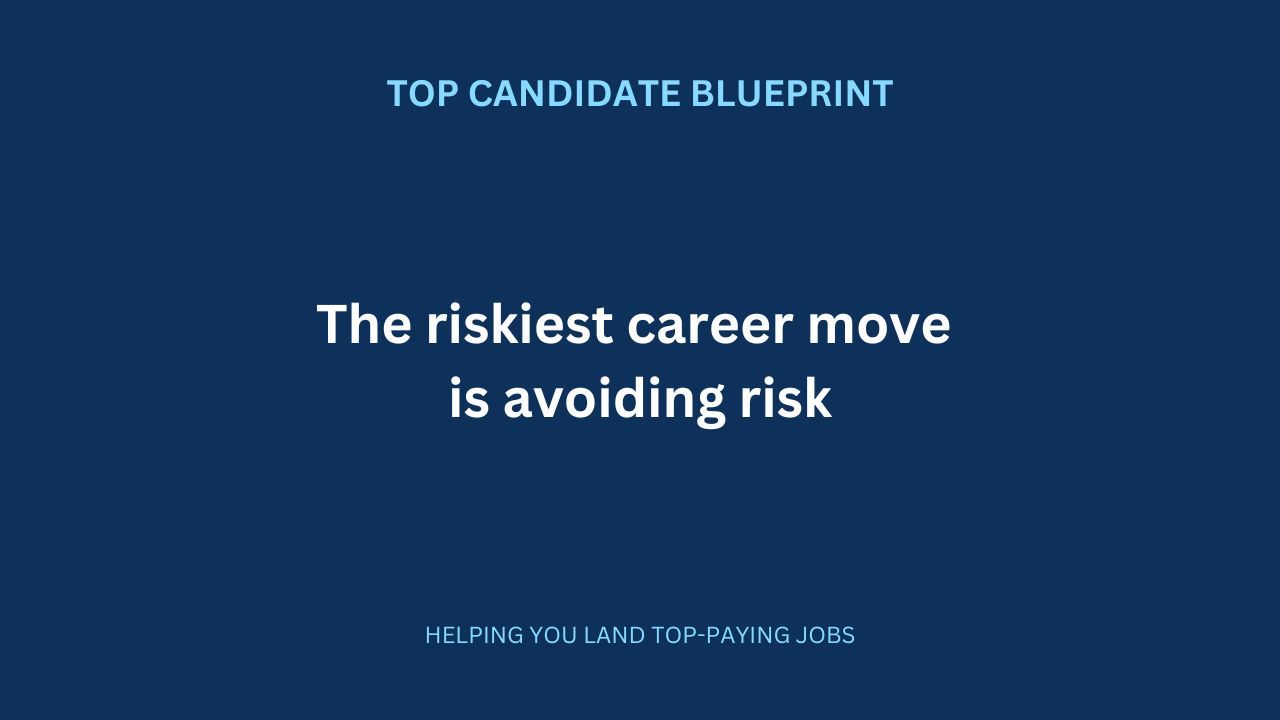
The riskiest career move is avoiding risk
The education system punishes us for making mistakes, but in the real world, you don’t know the best plan until you try.
Before we dive in, below 3 are the most common traps that seem safe but in reality are not:
Trap #1: Taking a job at a big corporation but reporting to a bad manager.
An incompetent manager can seriously damage your career and growth ambitions. Your friend who started at a small startup can make more money faster.
Trap #2: Going after a job title in a declining industry.
The stress of trying to save the sinking ship will not be worth a shiny job title. Your friend who has a Junior title in a high-growth industry will end up growing faster.
Trap #3: Taking a job where you can cruise.
If you are not learning and adding value; when it comes to cost-cutting, the cruisers are at the highest risk. Your friend who took a job where they can learn the latest skills will find the job faster (even if they are made redundant).
That’s why you need to learn to take intelligent risks.
It's a rare but necessary skill in today’s ever-changing world - so you can grow and earn more. Let’s dive in…
Method #1: Think hard before you walk through a one-way door.
To change careers, first understand the difference between "one-way doors" and "two-way doors".
One-way doors: You walk through and never look back.
Two-way doors: You can walk back if needed.
We all are good at overestimating risks and underestimating opportunities.
Let’s say you want to move from Marketing to Product Management. You invested in an online course and took side projects.
What is the worst that could happen? You try and realise it’s not for you. And if you took a break for this, you can always go back to your Marketing job.
If in doubt, take two-way doors to find out what you want to do. That way, you won't live with the regret of not trying and keep blaming yourself.
Method #2: Consider your age and stage to design your risk.
In your twenties and thirties, people take higher risks and try new career options. As we grow, our risk tolerance goes down.
I get it - you have a family, mortgage, etc.
As you grow in your career, most people can’t quit and make high-risk career moves.
But you have gained the depth of knowledge. This can allow you to diversify your risk. Establish a portfolio career to test your interest.
Let’s say you are a Data Engineer but you love teaching. You don’t need to quit your job and move into teaching.
You can use your desire to teach to earn extra income:
- Start with running sessions in your company to educate on data engineering.
- Write online to share the pros and cons of life as a data engineer.
- Give free coaching to know what people want to learn.
Then move to offer paid coaching.
Method #3: Don’t confuse uncertainty with risk.
The very first step of taking a risk is not waiting to know 100% of all details before making a decision.
So, what is the sweet spot? 50% or 75%?
Look for the type of opportunity and market trend.
Let’s take an example: You work in a traditional bank and have insights that Fintech is growing.
When a hot opportunity comes in a Fintech company, you don’t need to confirm everything. Jump on the opportunity. In 2 years, you will be more valuable to the economy.
I did the same in 2020 when Tech was booming. I left a big corporation and joined a SaaS startup. I knew I could double my income in Tech Sales faster than working in a slow-moving industry.
